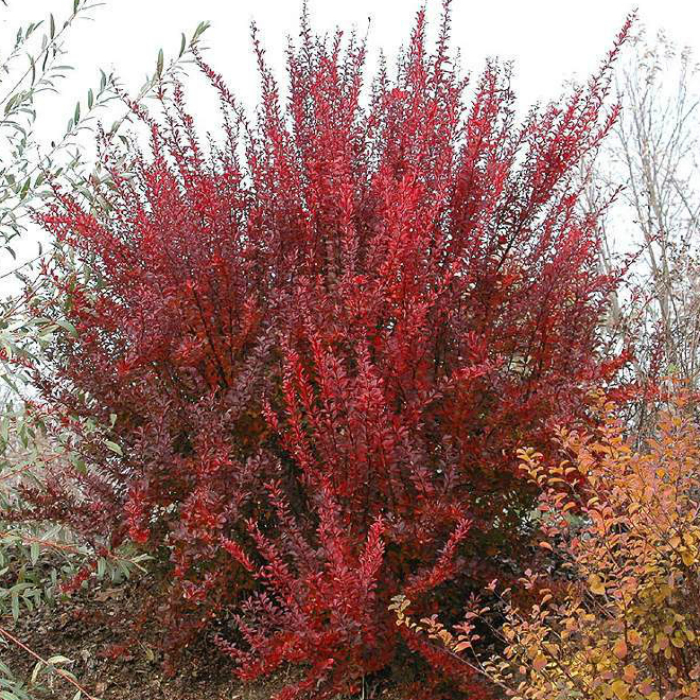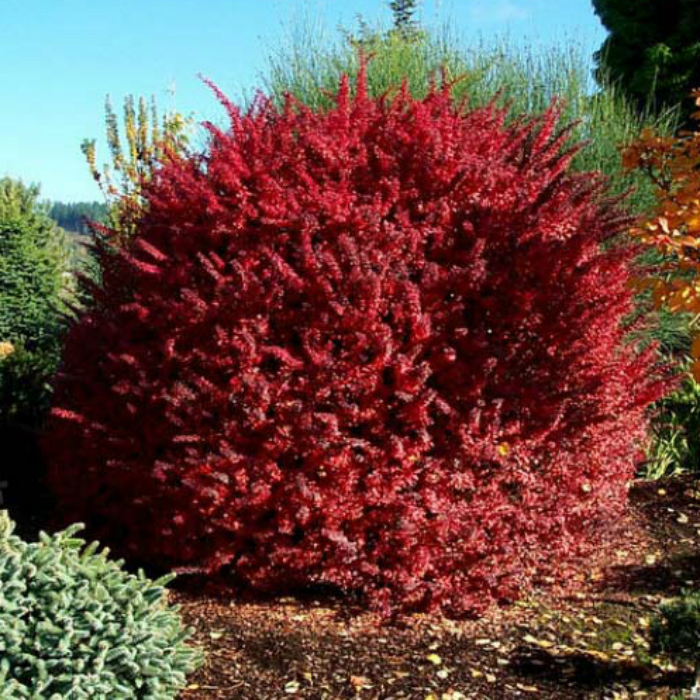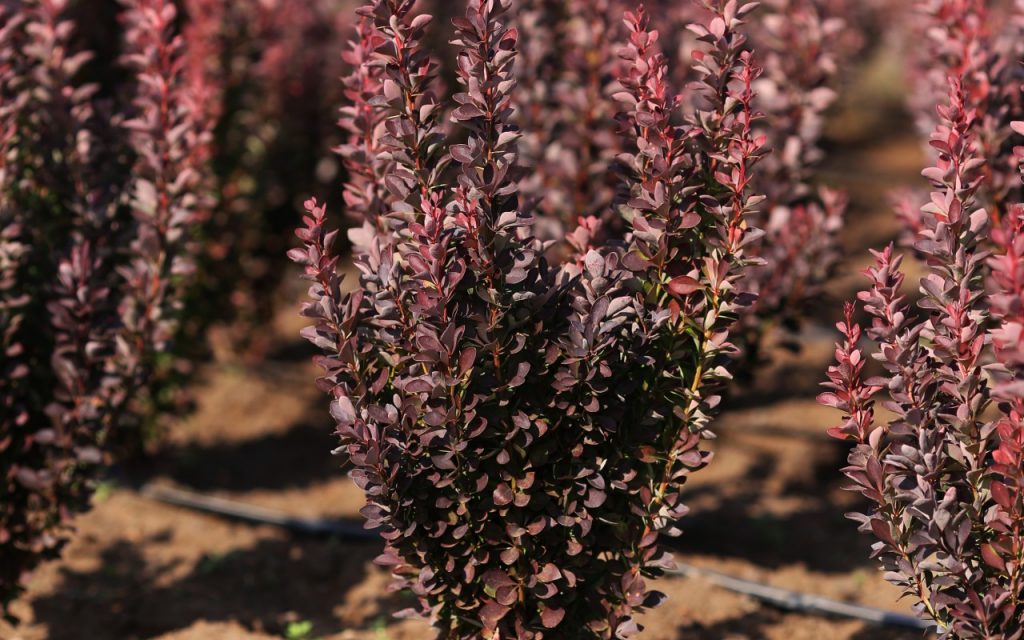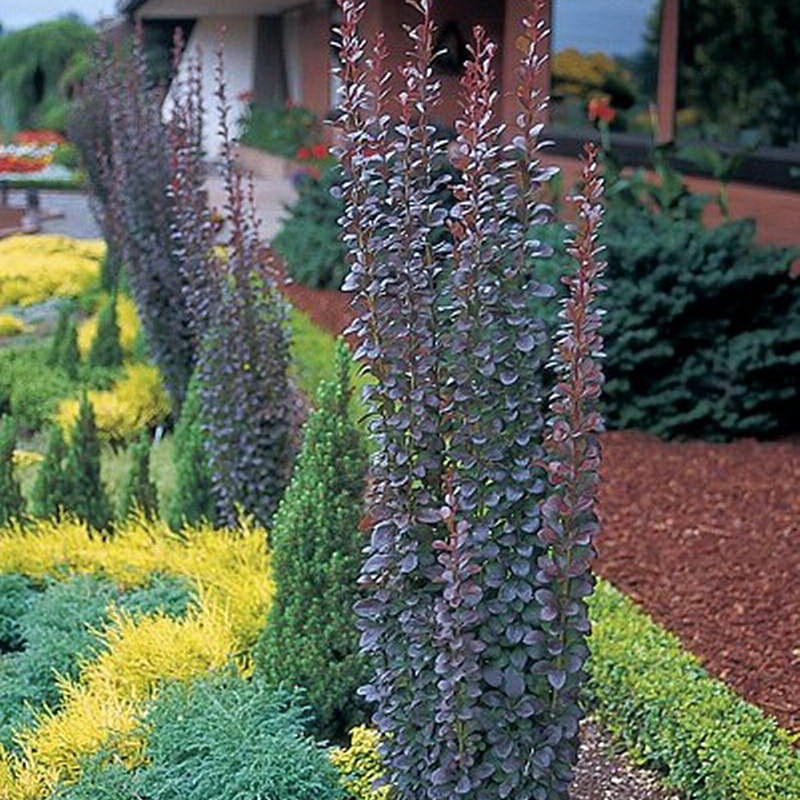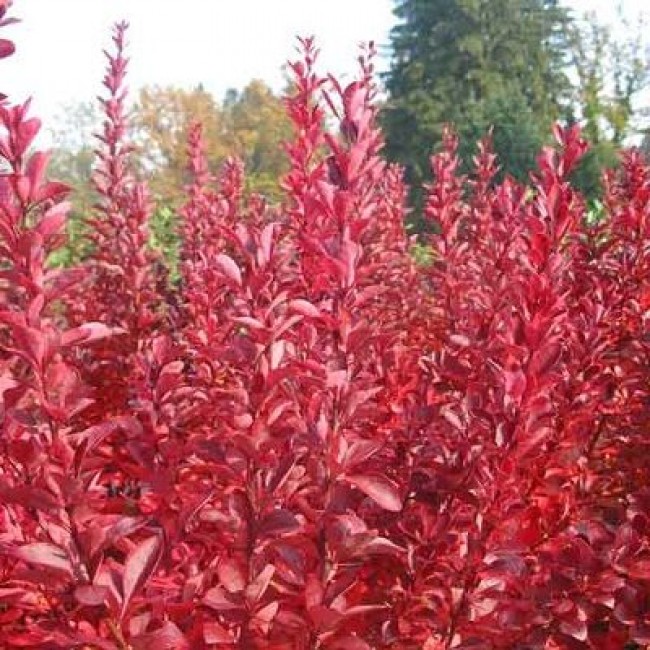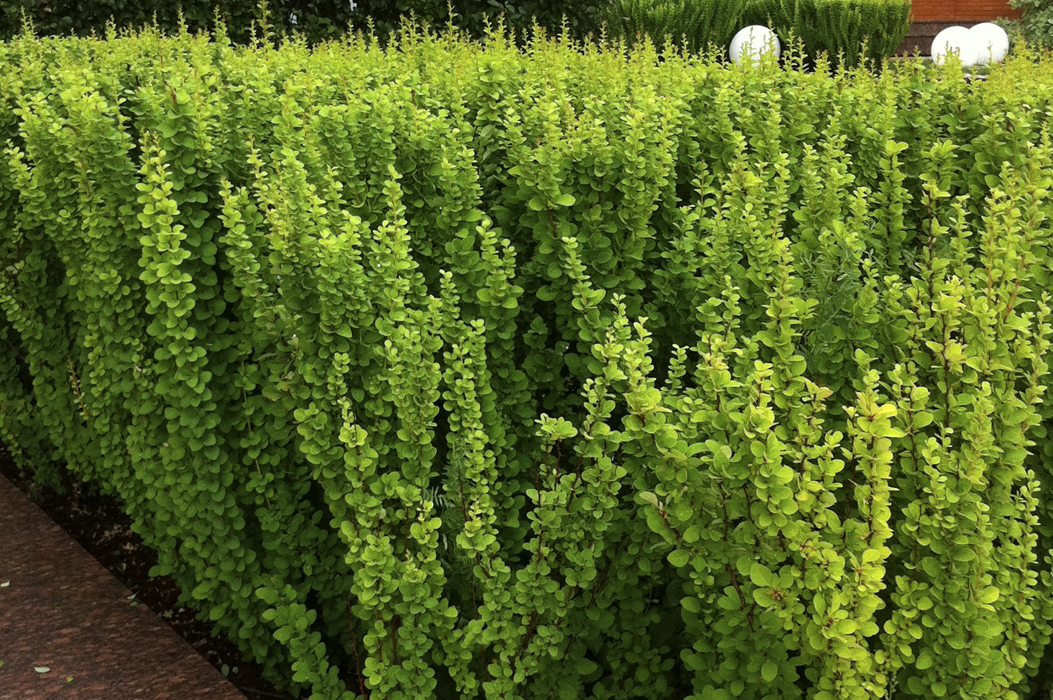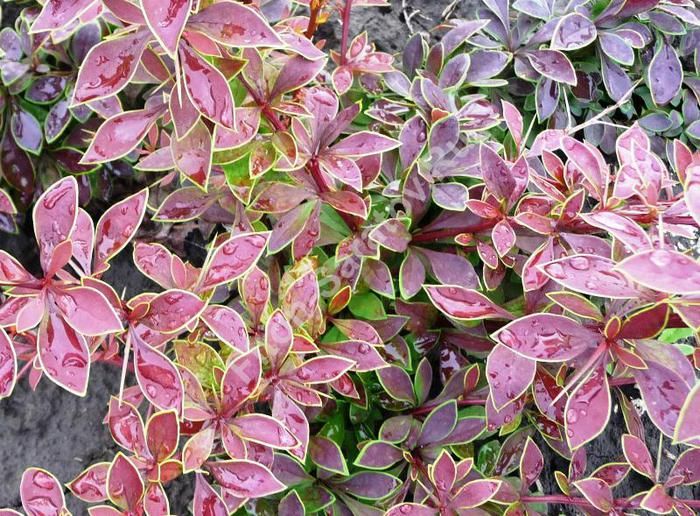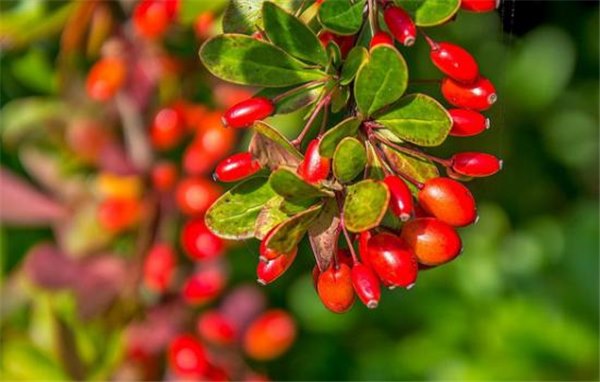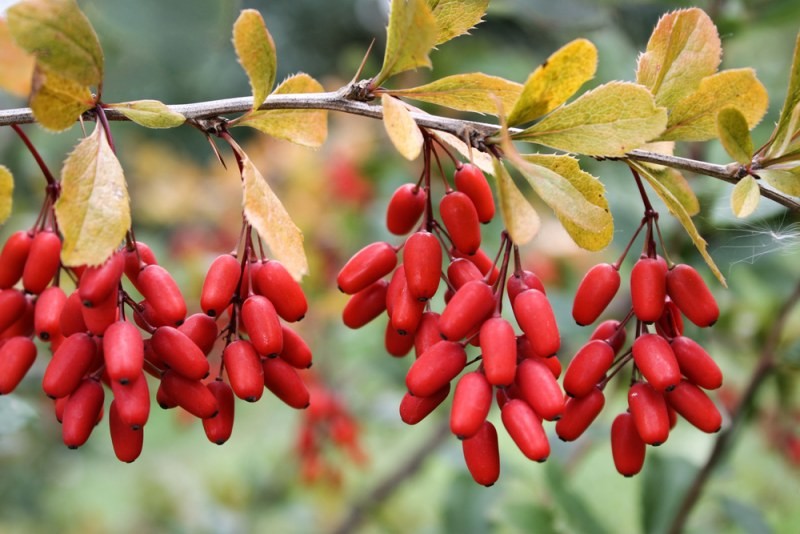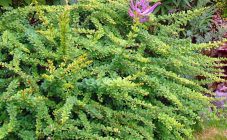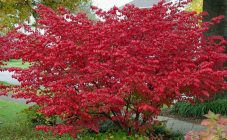Content:
Barberry is a plant that is widely used in landscape design. Today, there are at least 170 varieties of this culture. These include the Thunberg Red Rocket barberry.
general characteristics
Few people know, but the columnar red rocket barberry is one of the most widely represented varieties. He is distinguished by his tallness and general unpretentiousness in care.
In areas with a cold climate, barberry loses its foliage in winter, and in warm regions it remains with leaves.
On the territory of our country, the variety is not widely represented. Seedlings of culture are offered by rare nurseries, and at a fairly high price. Despite this, in recent years, there has been an increasing interest in the Red Rocket barberry from Russian gardeners.
Features of the variety
The red rocket barberry belongs to the Barberry family. It has purple leaves and red fruit clusters. This is a tall shrub, its height can reach 2 m, and in diameter - up to 12 meters. The culture blooms in most regions in May-June with small yellow flowers that are collected in a brush. The plant is not too demanding for soils, it can grow well in fertile soil with any acidity. The plant is resistant to drought, does not tolerate excessive moisture. Planting barberry is preferable in sunny areas.
The shoots of the culture are vertical. They are long, rather thin and differ in insignificant branching. The bark of young plants has a reddish-brown hue, and those that have already become woody - a standard brown color.
The leaves of the variety are relatively large. Their length can reach 2.5 centimeters. The shape is usually round or ovoid. The color of the leaf largely depends on the degree of illumination of the area for planting and can be from reddish green to dark purple shades.
Barberry Thunberg Red Rocket finds wide application in the field of landscape design. It fits perfectly into woody and shrub compositions and is often used to create hedges, alpine slides, etc. The plant perfectly tolerates haircuts and rejuvenating pruning. If desired, it can be given almost any form.
The only significant disadvantage of this columnar barberry is its prickly nature, which can make it difficult to care for the plant.
Planting and leaving
Many gardeners in the Thunberg Red Rocket barberry are attracted, first of all, by its high winter hardiness. The variety does not freeze even in rather harsh Russian winters. The culture grows best on the upper parts of the slopes and hills (where water usually does not stagnate). Good illumination of the barberry will help to increase the yield.
Landing features
Red rocket Thunberg barberry does not tolerate clay soils. Novice gardeners may need instructions for planting a plant. Cuttings or seedlings are best suited for planting. The latter must necessarily have a developed root system.They should be planted either in the fall, when leaf fall begins, or in the spring, when the buds have not yet had time to open.
The acidity of the soil should not exceed 7.5 pH. If this factor is higher, the soil must be calcareous.
The size of the landing pits may vary:
- for young seedlings (not older than 3 years), the depth and diameter of the fossa should be 25 cm;
- for adult plants (from 4 to 7 years old), the depth and diameter of the fossa is required twice as much - 50 cm;
- for a hedge, you will need to dig a trench with parameters 40x40 (depth and width).
Usually the pits are prepared about a day before the start of planting. When planting, compost mixed with garden soil, or a mixture of humus and sand should be added to them.
Fertilization
After the barberry plant planted in the garden reaches two years of age, it requires mandatory feeding with nitrogen fertilizers. Most often, urea is used in a proportion of 20 g per 10 liters of water. The next similar top dressing is carried out when the barberry shrub turns 5 years old.
The plant must be fertilized before flowering. In this case, any universal formulations can be used.
The use of natural fertilizers is also allowed. Poultry droppings or cow dung diluted with water are perfect.
Watering
Barberry does not like moisture too much, so if the summer is rainy, it does not need to be watered at all. During dry periods, watering should be done 2 to 4 times a week. Each bush requires about 10 liters of water.
Destruction of pests
Barberry is not too susceptible to disease or pest attack. But the possibility of damage to the plant should not be completely ruled out. To destroy such a harmful insect as the flower moth, Decis or Chlorophos preparations are suitable. In the fight against aphids, laundry soap and tobacco tincture diluted in water will be effective. From the fungus will be very effective treatment with the "Abigapik" and copper oxychloride.
Pruning
Pruning barberry is usually done for the first time when the shrub is 8 to 10 years old. Next, you will need to prune the plant every fall. To get the job done, you can use a hedge trimmer, garden saw and pruner. Since the Thunberg Red Rocket barberry has many thorns, all work must be carried out using special protective gloves.
The first step is to remove the old branches that are in close proximity to the ground, and only then partially remove the new shoots in the crown. This pruning is rejuvenating.
In addition to rejuvenating pruning, caring for the plant also involves regularly cleaning the shrub from dried branches, since they can slow down the development of fruits. This procedure is traditionally performed in the spring.
For hedges, they are pruned at the end of flowering.
Reproduction of barberry
The reproduction of the Thunberg Red Rocket barberry is possible in several ways:
- layering and root processes;
- cuttings;
- division;
- seeds.
The most commonly used method is shoots and root layers. It is especially effective for obtaining a full-fledged seedling with a sufficiently developed root system. Layers are good because any varietal characteristic with this method of propagation will be preserved.
With the help of seeds, you can also get a sufficient number of seedlings. If you prepare a description of the shortcomings of seeds, then the list will be, although not long, but sufficient to abandon this method of reproduction. The fact is that the seeds have a low germination rate, they do not retain the varietal characteristics of the culture and take a long time (up to 2 years) to grow a full-fledged seedling.
Cutting is a much more efficient way to propagate barberry. It allows you to receive planting material in any season, except for winter.Summer cuttings, as practice shows, give better roots. They are usually green in color. Wood cuttings are best harvested before winter or early spring.
As for dividing the bush, this method of breeding barberry is not among the most popular. Indeed, when using it, there remains a serious risk that a plant divided into several parts will not be able to take root in another place.
Shelter for the winter
Despite the fact that the Thunberg barberry belongs to varieties that tolerate low temperatures quite well, in snowless winters, the culture must be protected from the cold. You can cover the barberry with spruce branches, dry leaves, peat or straw. If winters in the growing area are usually snowy, the plant can be left uncovered.
Advantages and disadvantages
It is not difficult to describe the main advantages of the Thunberg Red Rocket barberry. First of all, we are talking about the following significant points:
- ease of care;
- unpretentiousness to growing conditions;
- frost resistance;
- drought tolerance;
- high decorative characteristics at any time of the year.
This type of barberry is a real find for landscape designers. In spring and summer, the foliage of the plant has a bright purple color, and in autumn it takes on incredible shades.
There were no significant drawbacks in the culture. What can be called (for example, intolerance to excess moisture) are not really disadvantages, but rather the nuances of growing.
If desired, the plant can be planted in almost any region of our country. Its fruits are not only beautiful, but also useful. But, despite this, barberry is still much more often planted as an ornamental plant. The culture grows very quickly in height, practically not expanding in width, therefore the Red Rocket barberry fits best into small gardens, in which there is little room for large plantings.
Gardeners who have made a choice in favor of this variety of a popular and demanded plant have a unique opportunity to make their garden plot beautiful and unique to the envy of all neighbors. Given the unpretentiousness of the barberry in care, the choice in its favor is a completely justified and rational decision.
